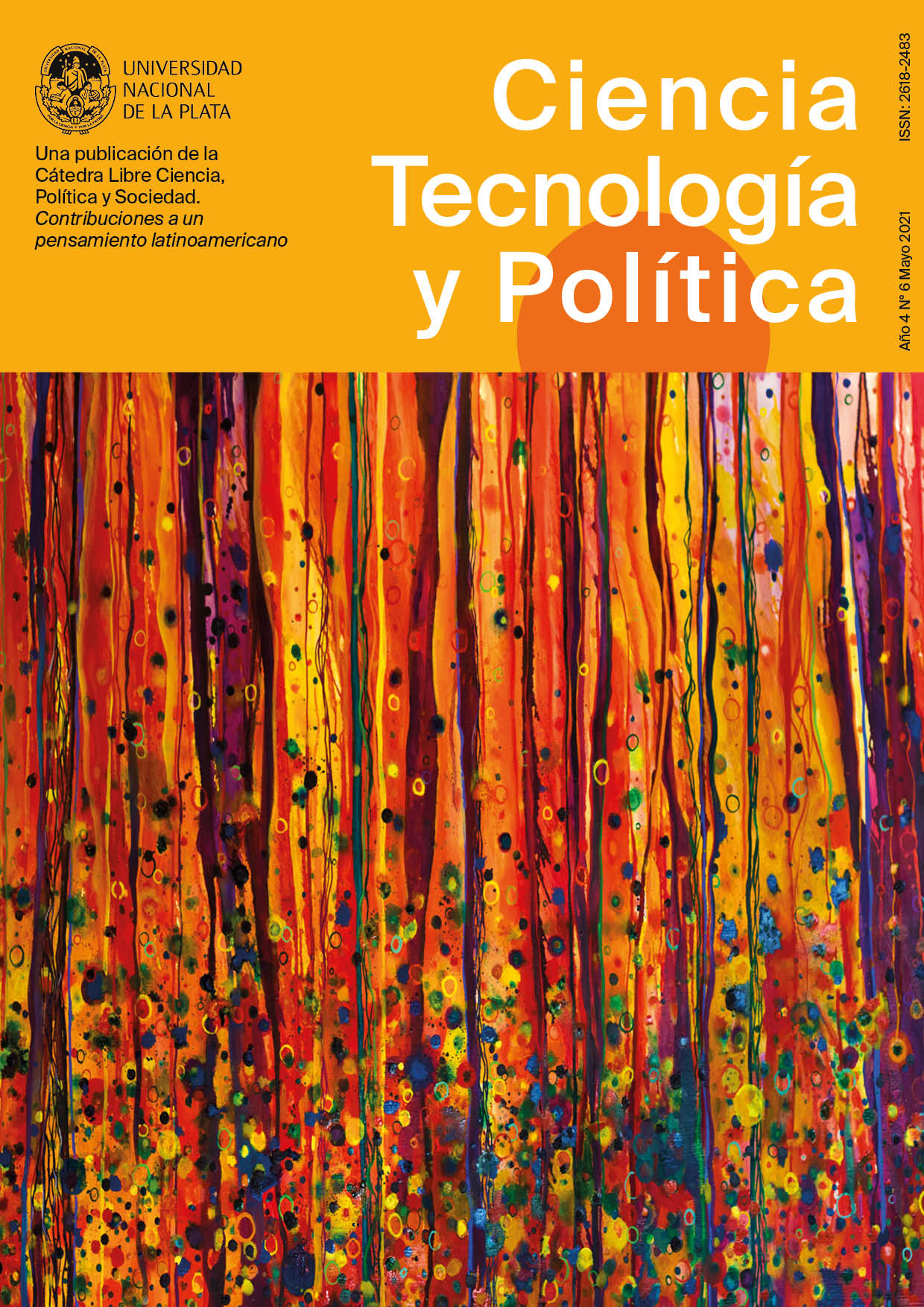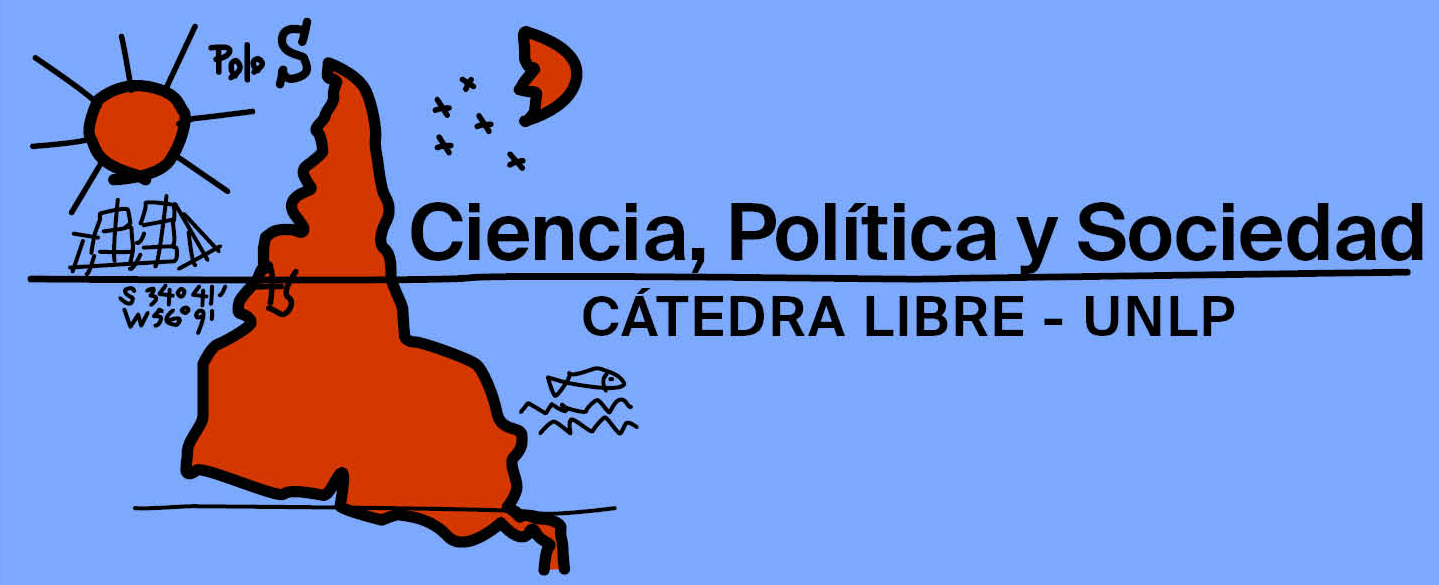Reflections on a possible socialist-inspired technology
DOI:
https://doi.org/10.24215/26183188e054Keywords:
technologies of socialist inspiration, technological alternatives, technological imaginaries, innovation in conditions of scarcityAbstract
There is a need to have technologies inspired by values and interests different from those prevailing in capitalism if we want to achieve a different and an egalitarian social order that does not put the future of the planet at risk. The difficulties of achieving them are analyzed, both generally and specifically "from the South" and it is shown that there are also strengths on which to lean. A way of understanding "technologies of socialist inspiration" is proposed and there are suggestions to open up conditions of possibility for them.
Downloads
Metrics
References
Arocena, R.; Sutz, J. (2020). The need for new theoretical conceptualizations on National Systems of Innovation, based on the experience of Latin America. Economics of Innovation and New Technology. https://doi.org/10.1080/10438599.20 20.1719640
Braverman, H. (1975). Trabajo y capital monopolista. Editorial Nuestro Tiempo.
Correa, C. M. (2003). Managing the Provision of Knowledge: The Design of Intellectual Property Laws. En: Inge Kaul; Pedro Conceição; Katell Le Goulven; Ronald U. Mendoza (eds.), Providing Public Goods (pp. 410-430). NY: PNUD-Oxford University Press.
David, P. (1985). Clio and the Economics of QWERTY. The American Economic Review, 75(2), Papers and Proceedings of the Ninety-Seventh Annual Meeting of the American Economic Association, 332-337.
Ehn, P.; Nilsson, E.; Topgaard, R. (2014). Making Futures. Marginal Notes on Innovation, Design, and Democracy. The MIT Press.
Galante, O; Marí, M. (2020). Jorge Sabato y el pensamiento latinoamericano en ciencia, tecnología, desarrollo y dependencia. Ciencia, Tecnología y Política, (3)5, e048. https://doi.org/10.24215/26183188e048
Lundvall, B.Å. (1985). Product Innovation and User-Producer Interaction. Industrial Development Research Series No. 31, Aalborg University Press.
Marglin, S. (1977). Orígenes y funciones de la parcelación de tareas. ¿Para qué sirven los patrones. En: Gorz, A. (ed.), Crítica de la división del trabajo (pp. 45-96). Laia.
Misa, T. (1994). Retrieving Sociotechnical Change from Technological Determinism. En Smith, M. R.; Marx, L. (eds.), Does Technology Drive History? The dilemma of technological determinism (pp. 115-142). The MIT Press.
Noble, D. (1977). America by Design. Science, technology and the Rise of Corporate Capitalism. Knopf Books.
Noble, D. (1979). Social choice in machine design: the case of numerically controlled machine tools. En Zimbalist, A. (ed.), Case Studies on the labour process (pp. 18-50). Monthly Review Press.
Ostrom, E. (1996). Crossing the Great Divide: Coproduction, Synergy, and Development. World Development, 2(4) 6, 1073-1087.
RED PLACTS (2020). Otro estilo científico y tecnológico es posible. Ciencia, Tecnología y Política, (3)5, e050. https://doi.org/10.24215/26183188e050
Rogers, E.M. (1995). Diffusion of Innovations, Fourth edition. Free Press.
Rothwell, R.; Freeman, C.; Horlsey, V.; Jervis, A.; Robertson, J; Towsend, J. (1974). SAPHO updated-Project SHAPO phase II. Research Policy, (3)3, 258-291.
Sabato, J.; Botana, N. (1968). La ciencia y la tecnología en el desarrollo futuro de América Latina. Revista de la Integración 3, 15-36.
Srinivas, S.; Sutz, J. (2008). Developing countries and innovation. Searching for a new analytical approach. Technology in Society, Vol.30, Issue 2, 129-140.
Sen, A. (2000) Desarrollo y libertad. Planeta.
Von Hippel, E. (1998). The Sources of Innovation. Oxford University Press.
Zuboff, S. (2019). The Age of Surveillance Capitalism: The Fight for a Human Future at the New Frontier of Power. Public Affairs.
Published
How to Cite
Issue
Section
License
The authors whose texts are published in this Journal surrender their ownership rights in favour of the editor in a non exclusive manner, i.e. the authors can enter into other independent and additional contracts to publish their text, e.g. including it in an institutional repository, thematic or otherwise, publish it in a book, or others, as long as it is overtly stated that the work was first published in this Journal.
The responsibility for each published paper as regards its content relies exclusively on its authors, holding the editors harmless for any legal liabilities.
The texts of the Journal shall be published under the Creative Commons 4.0 BY-NC-SA license. Therefore, the editors are free to:
1) Share, copy and redistribute the material using any means or format.
2) Adapt, remix, transform and create from the material, under the following conditions:
a) Attribution — credit to this work must be given in an appropriate manner, providing a link to the license and indicating if changes have been made.
b) Non-Commercial Use — no use may be made of the published material for commercial purposes.
c) Share Equal — Authors remixing, transforming or creating from the material must distribute their contribution under the same license as the original.




































